Physical racing and esports merge in the Mission R. This is due to its driver cell monocoque, which is designed as a self-contained module and can be used in exactly the same form outside the vehicle as a simulator. This allows the driver to prepare virtually for their next race in a familiar environment. And the racing drivers of tomorrow can also use the driver cell to take part in esports events.
The interactive possibilities offered by the Mission R are also aimed at a young and enthusiastic motorsports community. It is pre-equipped to provide a livestream broadcast from inside the car, and the driver can connect with their fans at the touch of a button. Fans can in turn communicate directly with the driver, for example by sending them likes in real time.
Particularly realistic race training on the simulator
The seat, steering wheel, controls, adjustable pedals and screens form a compact unit in the Mission R and lie on the same axis as the driver. This allows the driver to concentrate on essentials during the race.
At the same time, this driver module design enables a second driver's cell to be used outside the Mission R as a racing simulator. With the aid of movable, electrically controlled supports, the dynamic forces that impact on the driver can be simulated – when braking, for example, or as a result of rolling motions during fast cornering. Due to the familiar surroundings with identical display and control elements and the same full bucket seat, this kind of training can be extremely realistic and highly effective.
Ventilated full bucket seat, constructed by additive manufacturing
The full bucket seat offers high protection potential for the driver. At the same time, it has an innovative design and is produced in part using additive manufacturing processes as a so-called 3D-printed bodyform full bucket seat. The seat shell is made of the same natural fibre-reinforced material as the add-on parts in the exterior. The centre section of the seat, i.e. the cushion and backrest, is partly produced by a 3D printer.
Porsche initially showed this alternative to the conventional upholstery used for bucket seats as a concept study in 2020 and conducted tests with selected customers during a test phase. As part of the new Performance Parts range, the 3D-printed bodyform full bucket seat is now available from Porsche Tequipment for certain Boxster, Cayman, 911 and 718 models for which the current full bucket seat (order number Q1K or P11) is offered. Beginning in February 2022, it will also be possible to order the seat ex works via the Porsche Exclusive Manufaktur and it will then be integrated into the Porsche Car Configurator.
In the Mission R, the driver's seat is actively ventilated and upholstered in a breathable fabric that is made using a resource-saving 3D knitting process. The 3D-printed lattice structure also contributes to a good seat climate. These black, coarse-meshed elements are located, for example, in the area between the cushion and the backrest.
Staggered arrangement of displays based on importance
Maximum driver focus is the credo of the Mission R. The key displays and controls are located along the same axis. This reduces distraction and helps the driver to improve performance by speeding up their reaction time. The information is hierarchically clustered into three levels:
- Top priority is given to the six-inch multifunction OLED racing display. It sits directly between the steering wheel controls and, as such, is placed in the driver's immediate field of vision. This is where key data such as speed, lap time, tyre pressures or State of Charge (SoC) are displayed. Information on ABS and traction control is also included.
- A second screen is mounted on the steering column behind it. Its curved shape is reminiscent of the Taycan's large central display. This is where the images from the two exterior cameras are combined into a single image. Through this digital rear-view mirror, the driver can see what is happening on both sides and behind the racing car. A third, centrally positioned, rear-facing camera is mounted below the rear window. If radar sensors and cameras detect an imminent collision during the race, the Collision Avoidance System (CAS) alerts the driver to the danger by means of coloured markings on the edges of the race display.
- To the right of the driver and inclined towards them is a control panel with buttons and an integrated screen. It represents the third information level. This is where the driver's biometric data is displayed. This includes body temperature, for example, which is detected by sensors in the seat.
Livestream broadcast from inside the car
Two cameras mounted on the roof frame and on a rail above the passenger seat show what is happening inside the car during a race in real time. The live images can be transmitted directly to the community using a livestream button in the control panel. Fans can also communicate directly with the driver, for example by sending them likes.
Integrated helmet ventilation and disinfection
It goes without saying that motorsports equipment, such as a six-point safety harness, longitudinally adjustable pedals, safety nets and an extinguisher system, are also fitted. A new feature is the combination of helmet holder and dryer. In the Mission R, the driver’s helmet can be placed on a specially designed holder, which is positioned where the passenger headrest would be in a standard vehicle. During a break from racing, the helmet is first disinfected and then dried.
Porsche has once again come up with something special for the interior ventilation system: fresh air now enters the cockpit directly via an adjustable inlet in the windscreen. This is a very effective and sustainable solution, therefore, compared with conventional designs with centrifugal fans and long air ducts routed from the front of the vehicle into the interior.
For taxi rides, a second seat can be mounted on the passenger side. The control units, including cooler, which are combined into one electronic module, are located in the footwell. The driver's water bottle is also integrated into the seating arrangement. The expansion tanks for battery coolant, brake fluid and dampers are all neatly arranged beneath the rear window.

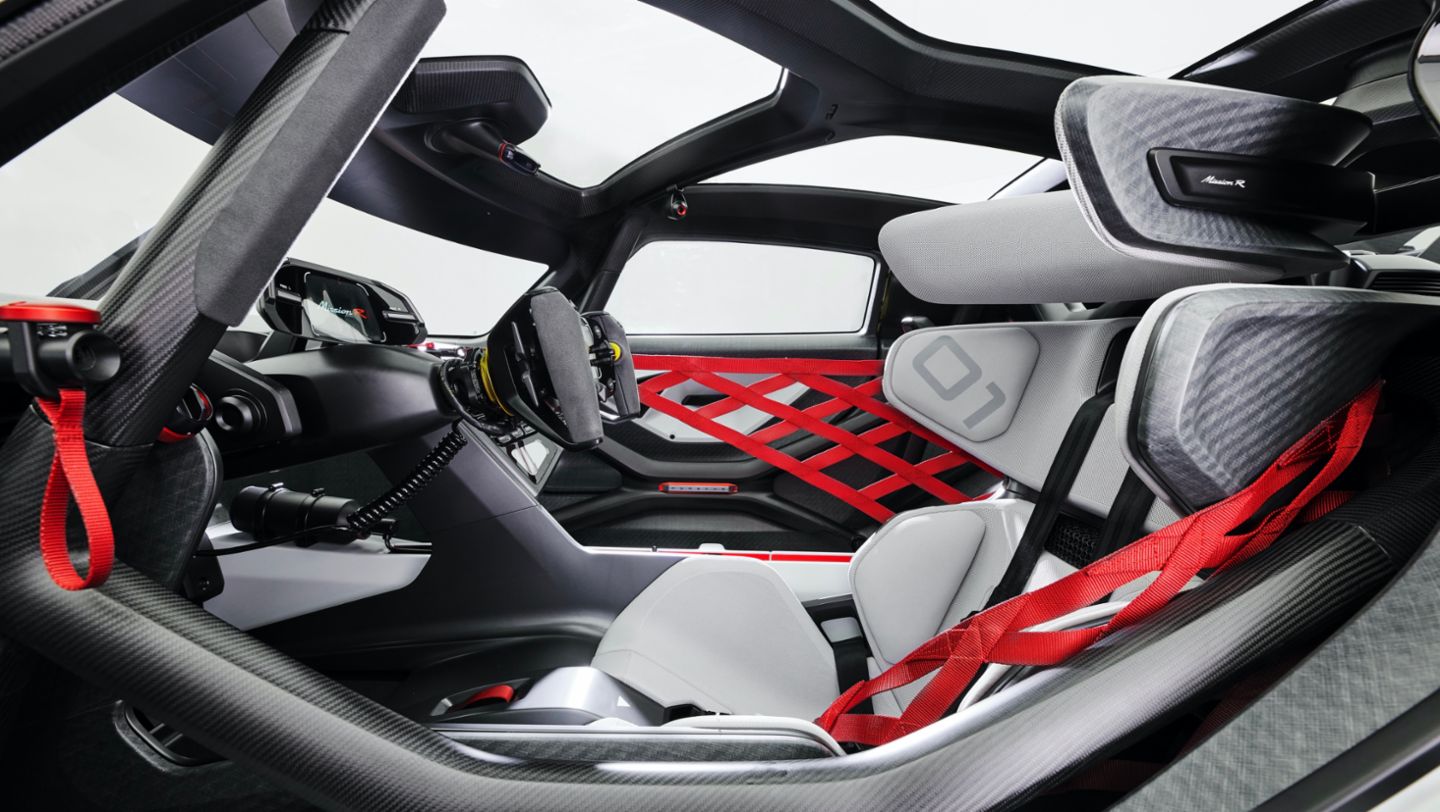
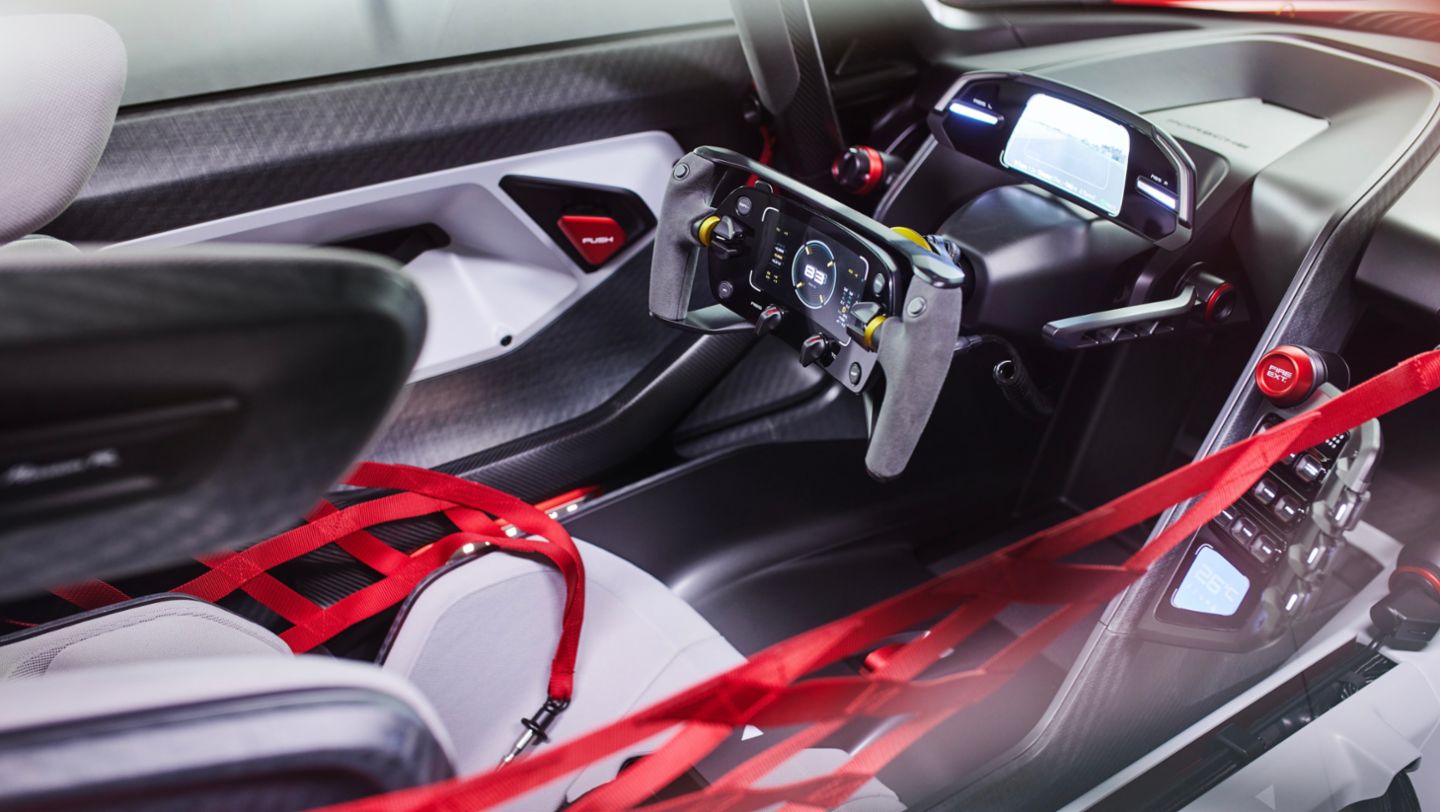
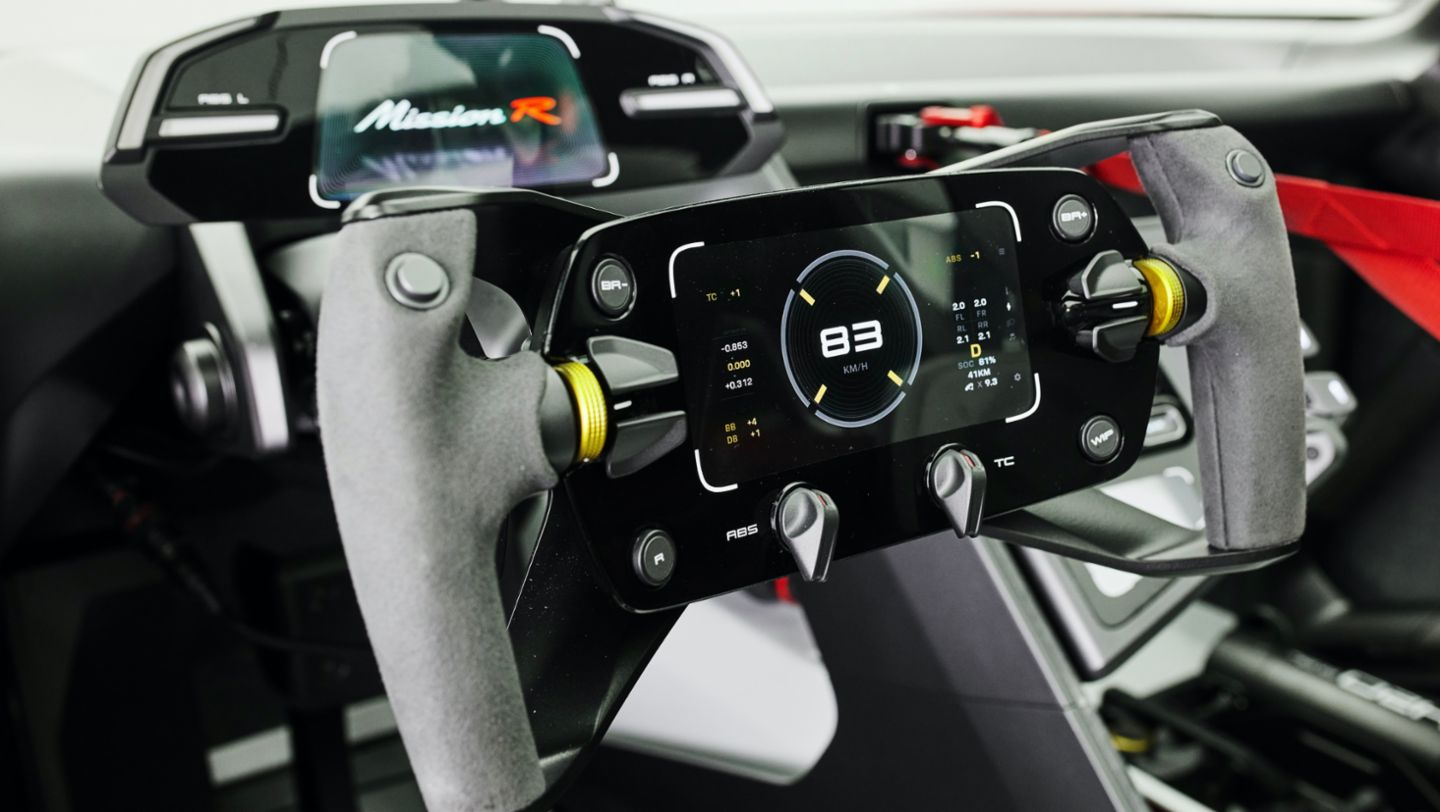
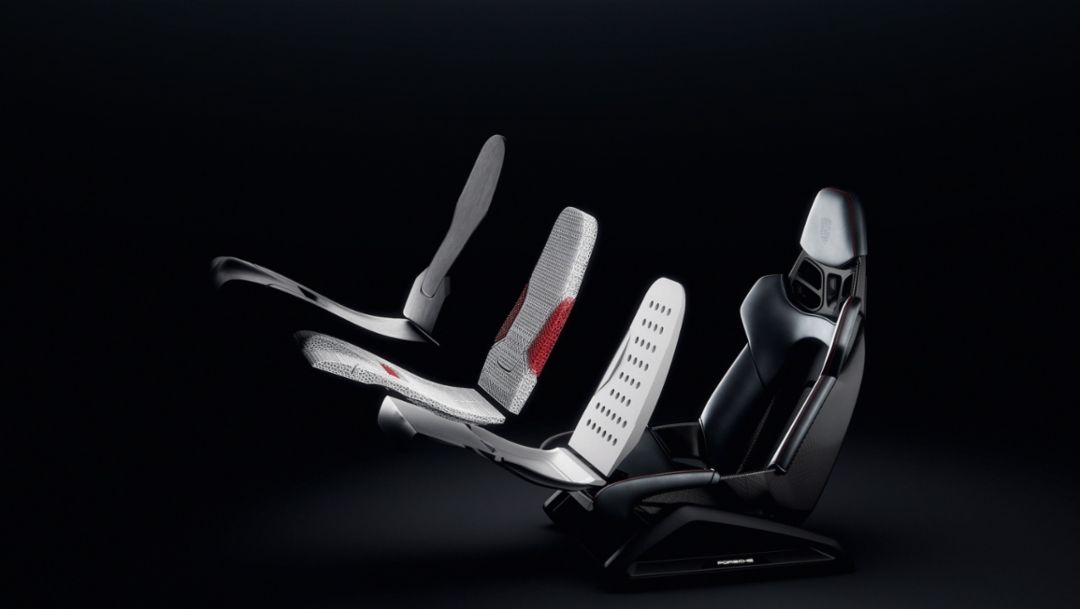







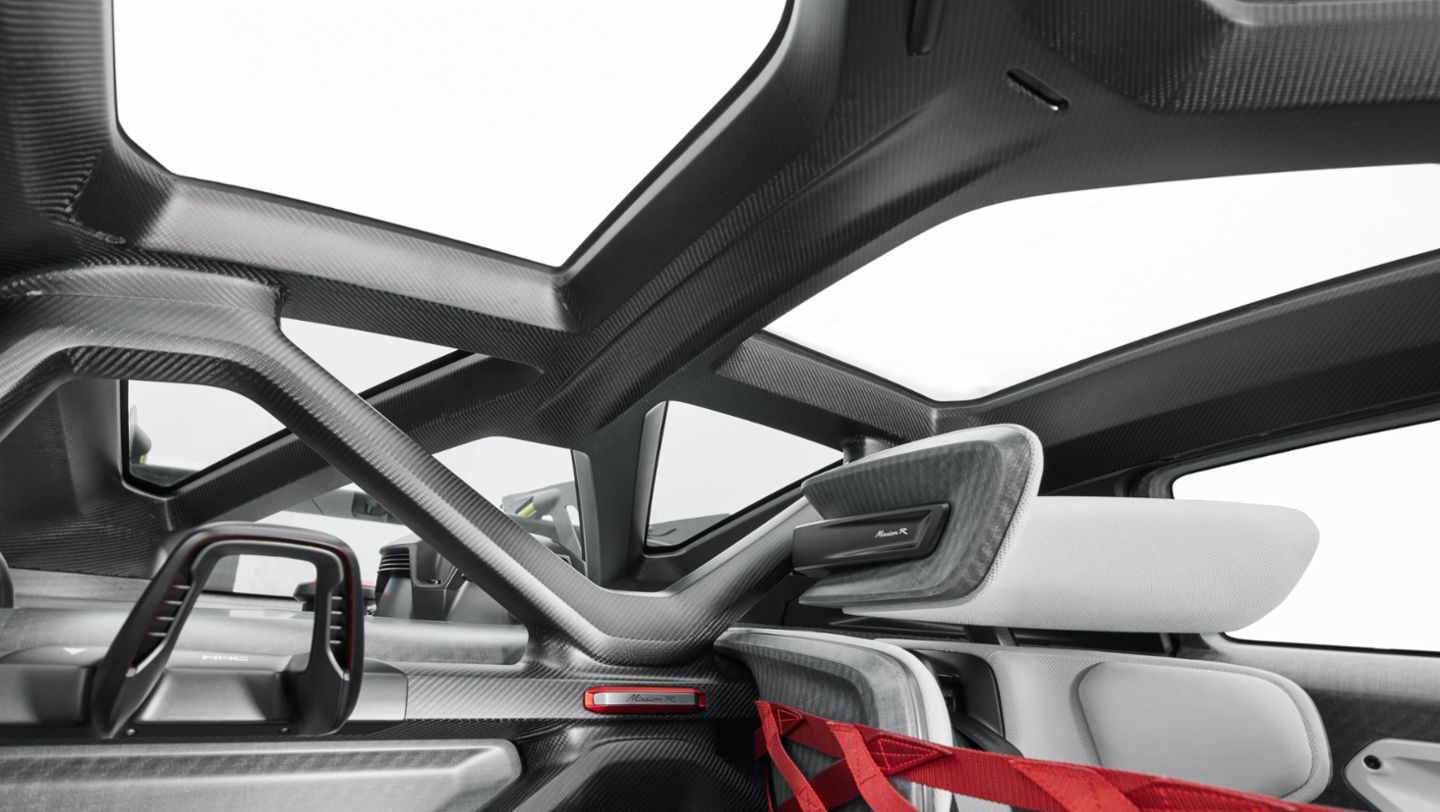
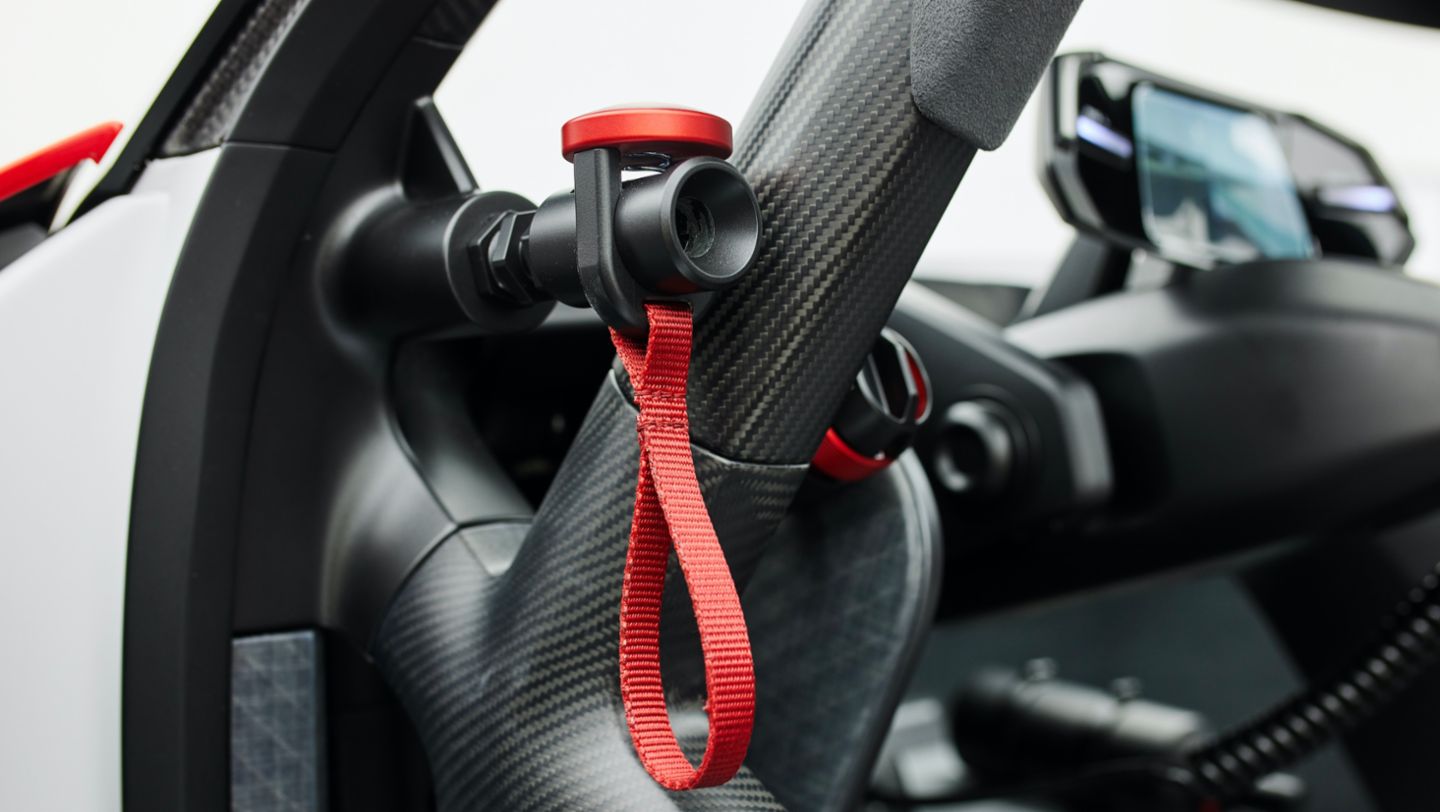

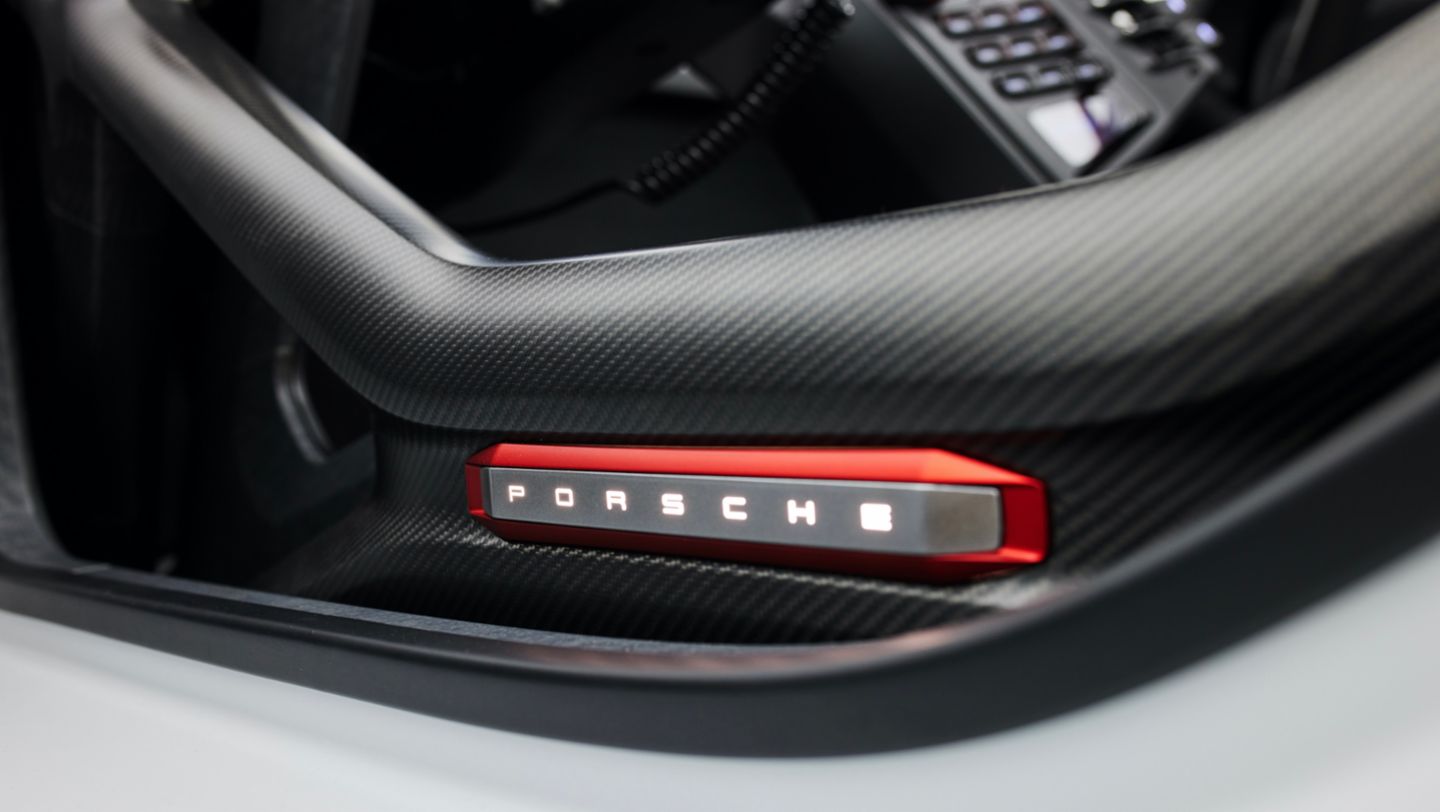

.jpeg/jcr:content/MicrosoftTeams-image%20(4).jpeg)
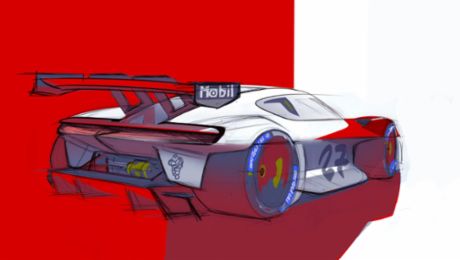
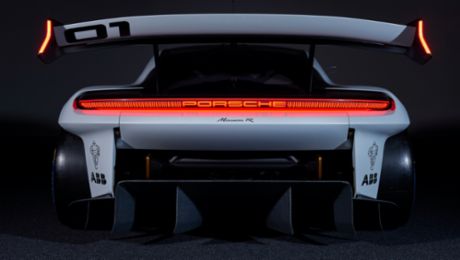
.jpeg/jcr:content/MicrosoftTeams-image%20(3).jpeg)